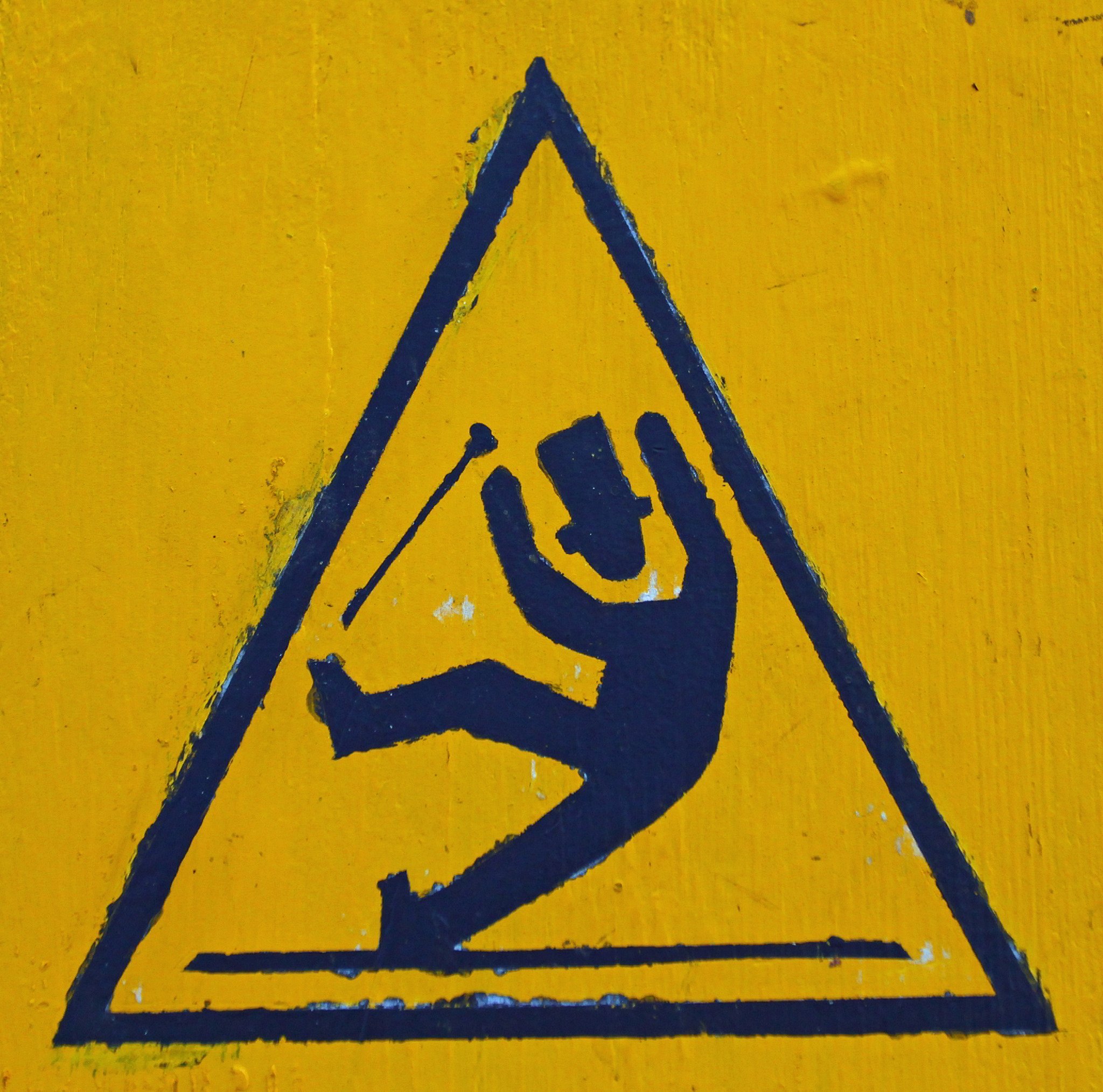What is the Health and Safety at Work Act 1974?
When it comes to the crunch, most things
Health and Safety in the UK link back to the Health and Safety at Work Act 1974 (HSWA).
It remains the main piece of law that relates to workplace health and safety in Great Britain.
There are also regulations which support the Health and Safety at Work Act. These provide more specific detail of what businesses should do to keep their workplaces safe and healthy.
In this guide, we'll provide you with some context around what HSWA is, how it is applied and why it affects your business.
OK, let's delve deeper into the Health and Safety at Work Act....
Is the Health and Safety at Work Act 1974 important?
We are big fans of keeping things simple. With that in mind, almost any workplace situation can be looked at in the context of HSWA 1974 to quickly give us an idea of whether we are doing things right.
To give some real context to the importance of the HSWA and those regulations we mentioned, you only have to look at recent prosecutions by the Health and Safety Executive (UK).
Don't take our word for it, have a look at the latest cases on the
HSE press page here....
As you can see, many of the issues relate directly to the Health and Safety at Work Act. It's also clear that the supporting regulations e.g.
Work at Height, play a pivotal part when it comes to employer's responsibility.
Putting in place safe working practices does not always have to be a daunting, time consuming or costly affair. Any investment towards good health and safety should be proportionate to the
level of risk in your business.
Let's look into the HASWA in some more depth....
What does the HSWA say?
The Health and Safety at Work Act 1974 sets out the legal framework for managing workplace health and safety in the UK.
The act outlines the general duties of everyone from
employers and employees to owners, managers and operators of work premises for maintaining health and safety within most workplaces.
There is, however, more specific guidance for certain activities and business sectors that operate within a higher risk environment. Such as the construction industry, chemical manufacturing, mining etc.
The HASWA itself is a primary piece of legislation that serves to guide the more specific stuff that falls underneath it. These other regulations which compliment the HSWA 1974 are simply secondary, or supporting pieces of legislation.
The secondary parts make it easier for small changes, updates or additions to be made to existing law.
Health and Safety at Work Act 1974 - Employers Responsibilities
The employer's duty under the
Health and Safety at Work Act 1974 (HSWA) is to ensure as far as is reasonably practicable, the health, safety & welfare of all employees. More specifically, employers must:
- provide plant, equipment and systems of work that don't present a risk to health or safety
- facilitate the safe use, handling & storage of substances and materials
- develop and maintain a written H&S policy and communicate it with employees
- provide a safe place of work , including access (entry) and egress (exit) i.e. the working environment and welfare facilities provided
- deliver adequate instruction, training and supervision i.e. informing workers fully about all potential hazards associated with any work process, chemical substance or activity
- consult with workplace safety representatives (if a union is recognised)
Listen to our Safeti School podcast below for an audio rundown of the key Employer's Responsibilities.
Of course, it's not just the employer that has health and safety responsibilities. In the workplace, there is an equal onus on the employee to act responsibly to protect both themselves and those who may be affected by their actions (or lack thereof!).
Free Health and Safety Policy Download
Download Now
-
Health and Safety Policy Template
-
Example H&S Policy/Statement of Intent
-
Health and Safety Arrangements Examples
-
Health and Safety Responsibilities Examples
Our bundle of health and safety policy templates & examples includes the General Policy, Statement of Intent, Responsibilities & Health and Safety Arrangements.
Health and Safety at Work Act 1974 - Employees Responsibilities
As we have discussed, as an employee you have rights when it comes to how you are treated by an employer (in accordance with the HSWA).
In the same vein, you also have important responsibilities for your own well-being and that of your colleagues.
Here are some of the most important health and safety responsibilities for employee's:
- to take reasonable care of your own health and safety
- to take reasonable care not to put other people - fellow employees and members of the public - at risk by what you do or don't do in the course of your work
- to co-operate with your employer, making sure you get proper training and you understand and follow the company's health and safety policies
- not to interfere with or misuse anything that's been provided for your health, safety or welfare
- to report any injuries, strains or illnesses you suffer as a result of doing your job, your employer may need to change the way you work
- to tell your employer if something happens that might affect your ability to work, like becoming pregnant or suffering an injury
- if you drive or operate machinery, you have a responsibility to tell your employer if you take medication that makes you drowsy
Who enforces the Health and Safety at Work Act (HSWA)?
The Health and Safety Executive (HSE) is the governmental appointed body that is responsible for enforcing the HSWA in the UK.
However, when it comes to enacting enforcement, this responsibility is divided between the HSE and local authorities. The importance of keeping up to speed with Health and Safety law is becoming more and more important in the UK – to find out why, listen our
podcast with legal expert Kizzy Augustin
UK Workplace Health and Safety Regulations
As previously mentioned, the Health and Safety at Work Act is the principal piece of legislation for occupational H&S in Great Britain.
However, there are other regulations to implement which are designed to keep your workplace compliant and safe. So remember, more specific regulations may also be relevant dependent on specific business areas or industry.
Here are a few examples;
The Management of Health and Safety at Work Regulations 1999
The Workplace (Health, Safety & Welfare) Regulations 1992
The Health and Safety (
Display Screen Equipment) Regulations 1992
The Personal Protective Equipment (PPE) at Work Regulations 1992
The Provisions and Use of Work Equipment (
PUWER) Regulations 1998
The Reporting of Injuries, Diseases and Dangerous Occurrences Regulations (
RIDDOR) 1995
The full list of UK regulations is available on the Health and Safety Executive
website.
Now, let's take a look at some of this stuff in a little more detail. Starting with the Management of Health and Safety at Work Regulations...
The Management of Health and Safety at Work Regulations 1999
Also known as the 'Management Regs', these came into effect in 1993. Main employer duties under the Regulations include:
- making 'assessments of risk' to the health and safety of its workforce, and to act upon risks they identify, so as to reduce them (Regulation 3);
- appointing competent persons to oversee workplace health and safety;
- providing workers with information and training on occupational health and safety;
- and operating a written health and safety policy.
As you can see, the Management of Health and Safety at Work Regulations was an attempt to outline some basic health and safety standards for workplaces.
It's important to understand the risks present in your work environment i.e. risk assessment - an important part for that process is ensuring you have someone competent to identify those significant risks.
Once you are able to identify and control the risks as far as
reasonably practicable, it's essential to train your employees on the implications for your business operation.
Workplace (Health, Safety and Welfare) Regulations 1992
The health, safety and welfare (HSW) regulations apply to all aspects of the working environment. Employers must:
- Provide a workplace that is safe
- Suitable for the duties that are being carried out within it
Examples include...
Provision for comfort and sanitation of employees (e.g. break areas, washing facilities, drinking water etc.).
Appropriate working environments (e.g. room dimensions, lighting and ventilation etc.).
It also asks for safety in the workplace (e.g. appropriate maintenance of equipment, maintained walking routes and floor spaces, protection from falling objects etc.).
For a full breakdown, refer to the
Workplace (Health, Safety and Welfare) Regulations.
The Health and Safety (Display Screen Equipment) Regulations 1992
The main provisions here apply to display screen equipment (DSE) 'users'. In other words, anyone working at a computer monitor.
This includes people who are regular users of DSE equipment, or rely on it as part of their job.
It applies to you if your employee's use DSE for an hour or more continuously, and/or you are making daily use of display screen equipment.
Ergonomic or musculoskeletal (MSK) injuries are thought to contribute to around 9 million lost working hours per year in the UK alone. It goes without saying, it can be a massive hidden cost for employer's and is the reason the regulations were introduced.
Under the DSE Regulations, employers are required to:
- make a risk assessment of workstation use by DSE users, and reduce the risks identified;
- ensure DSE users take 'adequate breaks';
- provide regular eyesight tests;
- provide health and safety information;
- provide adjustable furniture (e.g. desk, chair, etc.); and
- demonstrate that they have adequate procedures designed to reduce risks associated with DSE work, such as repetitive strain injury (RSI).
If you'd like to learn more about your obligations under DSE, check our
DSE Assessment Guide.
The Personal Protective Equipment at Work Regulations 1992
Another area of focus for workplace health and safety is the provision of PPE. Despite Personal Protective Equipment (PPE) being the least effective control measure when it comes to the
hierarchy of control, it is still used to reduce illness and injury across most industries.
The main provisions require employers to:
- ensure that suitable personal protective equipment (PPE) is provided free of charge "wherever there are risks to health and safety that cannot be adequately controlled in other ways."
- The PPE must be 'suitable' for the risk in question
- It includes protective face masks and goggles, safety helmets, gloves, air filters, ear defenders, overalls and protective footwear
- The employer must provide information, training and instruction on the use of this equipment.
Reporting of Injuries, Diseases and Dangerous Occurrences Regulations (RIDDOR) 1995
Under these Regulations, employers are required to report a wide range of work-related incidents, injuries and diseases to the Health and Safety Executive (HSE).
Or to the nearest local authority environmental health department.
The
RIDDOR Regulations require an employer to record the date and time of the incident, details of the person(s) affected, the nature of their injury or condition, their occupation, the place where the event occurred and a brief note on what happened.
The following injuries or ill health must be reported:
- the death of any person;
- specified injuries including fractures, amputations, eye injuries, injuries from electric shock, and acute illness requiring removal to hospital or immediate medical attention;
- 'over-seven-day' injuries, which involve relieving someone of their normal work for more than seven days as a result of injury caused by an accident at work;
- reportable occupational diseases, including:
- cramp of the hand or forearm due to repetitive movement;
- carpal tunnel syndrome, involving hand-held vibrating tools;
- occupational asthma;
- tendonitis or tenosynovitis (types of tendon injury);
- hand-arm vibration syndrome (HAVS), including where the person’s work involves regular use of percussive or vibrating tools; and
- occupational dermatitis;
- near misses (described in the Regulations as 'dangerous occurrences'). The HSE has produced a list of the kinds of incidents regarded as 'dangerous occurrences'.
Check out our
RIDDOR resource for more information.
There are, of course, many other regulations that fall under the health and safety at work act. Too many to go through in this post. With that said, if you are unsure whether a piece of HSWA 1974 related legislation or regulation applies to your business, don't hesitate to reach out to the experts at
Safeti for help via our live Chat Tool.
You can find out more about the type of help that we can provide below!
Exclusive Health & Safety Packages
Health and Safety at Work Act 1974 | Ask Us
Name *
Email *
Phone
Message *
Submit


